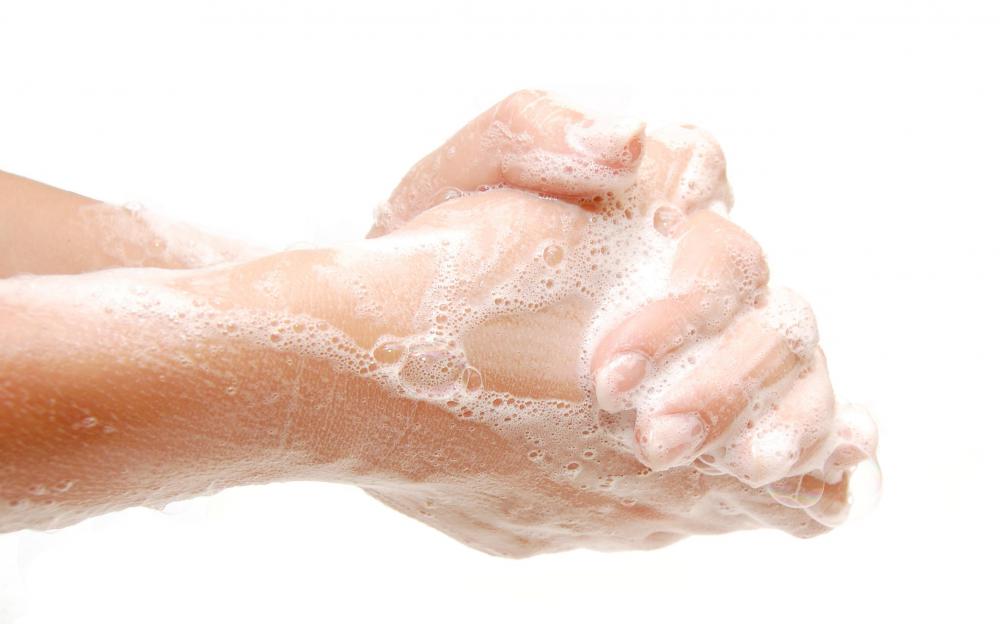At TheHealthBoard, we're committed to delivering accurate, trustworthy information. Our expert-authored content is rigorously fact-checked and sourced from credible authorities. Discover how we uphold the highest standards in providing you with reliable knowledge.
What is Ventilator-Associated Pneumonia?
Ventilator-associated pneumonia is a severe lung infection in a patient who has been on a ventilator for more than 48 hours. A number of microorganisms can be responsible for the infection and it is classified not by the causative organisms, but by the history of ventilator use to help the patient breathe. Pneumonia is a serious associated risk with ventilator use and some patients have a very high probability of developing ventilator-associated pneumonia. Infection rates can be as high as 25%.
There are a number of reasons why using a ventilator exposes a patient to the risk of pneumonia. Patients who require ventilation cannot breathe on their own and are often very sick. Their immune systems may be compromised, making it easier for microorganisms to colonize their bodies. The process of intubating a patient to set up the ventilator can introduce bacteria to the lungs and trachea, and as the tube is left in, bacteria can colonize it. When they do, they will be inhaled every time the patient breathes. Procedures like bronchoscopy can also introduce bacteria.

Once bacteria enter the lungs, they can start multiplying. The normal symptoms of pneumonia like coughing and difficulty breathing will not be observed because the patient is sedated and on a ventilator. Care providers must be alert to warning signs like decreasing oxygen saturations and fever. These indicate the presence of inflammation or infection in the body, and if a patient is on a ventilator, there is a strong change that the patient has ventilator-associated pneumonia.

Cultures can be taken from the lungs to identify the presence of bacteria and determine the identity of the causative organisms. It is also possible to scope the lungs to see the tell-tale signs of bacterial infections. Treatment involves the administration of antibiotic medications to kill the bacteria. One problem with ventilator-associated pneumonia and other hospital-acquired infections is that often, the organisms involved are drug resistant. Multi-drug resistance is not uncommon in hospital settings and it can complicate treatment considerably.

There are some steps that can be taken to reduce the risk of nosocomial, another term for hospital-acquired, infections like ventilator-associated pneumonia. Observing hand-washing and other basic hygiene protocols is extremely helpful, as is isolating patients known to be infected with multi-drug resistant bacteria. When placing intubation tubes and performing scopes and biopsies in the lungs, it is important to use properly sterilized equipment in a clean environment.
AS FEATURED ON:
AS FEATURED ON:













Discussion Comments
My grandfather had surgery for an unrelated issue but needed a ventilator for some time afterward. He ended up getting pneumonia. If he had gotten his pneumonia vaccine as his doctor had suggested, he probably would have been safe from it. Everyone over 65 can get this vaccine and I think it's a good idea.
@stoneMason-- I'm not an expert on this topic but I'm sure that hospitals do clean and sanitize ventilators and tubes regularly. I think many people with ventilator associated pneumonia get the bacteria in the hospital or during surgery. The ventilator may worsen things by giving the bacteria a good environment to multiply and infect the patient. So the ventilator isn't necessarily the root cause of the problem. It just makes it easier for pneumonia bacteria to survive and thrive.
Unfortunately, hospitals, no matter how hard they work to keep bacteria and viruses away do hold a variety of microorganisms because of the patients. And people who have weak immune systems due to illness develop infections like pneumonia very easily. So I wouldn't blame hospitals or doctors about this kind of pneumonia. But it is their responsibility to monitor the patient for signs of infections such as this and have it treated as soon as possible.
Don't hospitals sanitize ventilators and associated parts regularly and especially between patients? If ventilators are sanitized and germ free, I don't see why a patient would develop ventilator associated pneumonia. And if the patient does get it, and has to be on the ventilator, what do they do? Do they change the ventilator? What if the patient gets pneumonia bacteria again?
Post your comments